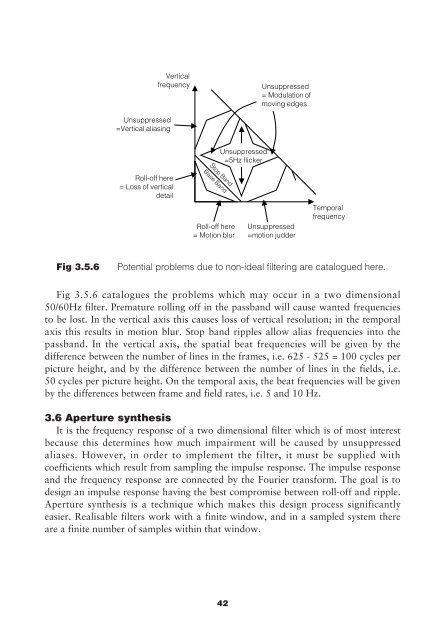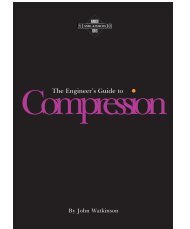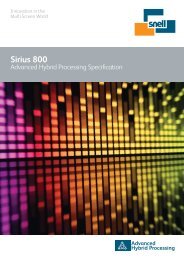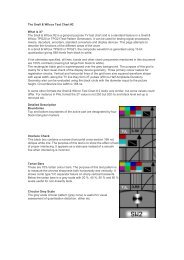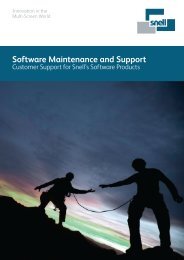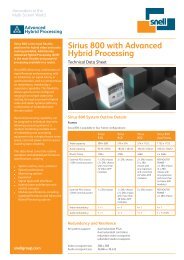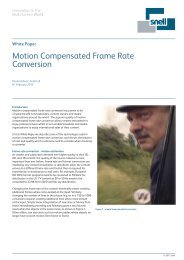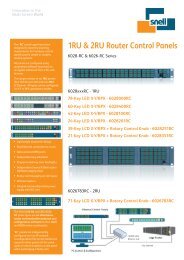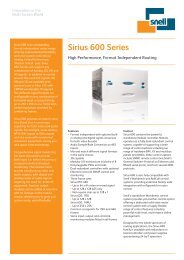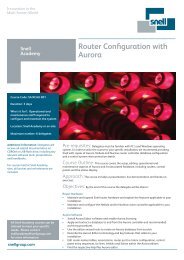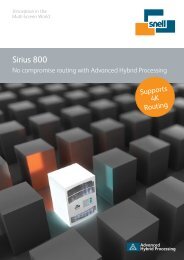The Engineer's Guide to Standards Conversion - Snell
The Engineer's Guide to Standards Conversion - Snell
The Engineer's Guide to Standards Conversion - Snell
You also want an ePaper? Increase the reach of your titles
YUMPU automatically turns print PDFs into web optimized ePapers that Google loves.
Vertical<br />
frequency<br />
Unsuppressed<br />
= Modulation of<br />
moving edges<br />
Unsuppressed<br />
=Vertical aliasing<br />
Unsuppressed<br />
=5Hz flicker<br />
Roll-off here<br />
= Loss of vertical<br />
detail<br />
S<strong>to</strong>p Band<br />
Base Band<br />
Roll-off here<br />
= Motion blur<br />
Unsuppressed<br />
=motion judder<br />
Temporal<br />
frequency<br />
Fig 3.5.6<br />
Potential problems due <strong>to</strong> non-ideal filtering are catalogued here.<br />
Fig 3.5.6 catalogues the problems which may occur in a two dimensional<br />
50/60Hz filter. Premature rolling off in the passband will cause wanted frequencies<br />
<strong>to</strong> be lost. In the vertical axis this causes loss of vertical resolution; in the temporal<br />
axis this results in motion blur. S<strong>to</strong>p band ripples allow alias frequencies in<strong>to</strong> the<br />
passband. In the vertical axis, the spatial beat frequencies will be given by the<br />
difference between the number of lines in the frames, i.e. 625 - 525 = 100 cycles per<br />
picture height, and by the difference between the number of lines in the fields, i.e.<br />
50 cycles per picture height. On the temporal axis, the beat frequencies will be given<br />
by the differences between frame and field rates, i.e. 5 and 10 Hz.<br />
3.6 Aperture synthesis<br />
It is the frequency response of a two dimensional filter which is of most interest<br />
because this determines how much impairment will be caused by unsuppressed<br />
aliases. However, in order <strong>to</strong> implement the filter, it must be supplied with<br />
coefficients which result from sampling the impulse response. <strong>The</strong> impulse response<br />
and the frequency response are connected by the Fourier transform. <strong>The</strong> goal is <strong>to</strong><br />
design an impulse response having the best compromise between roll-off and ripple.<br />
Aperture synthesis is a technique which makes this design process significantly<br />
easier. Realisable filters work with a finite window, and in a sampled system there<br />
are a finite number of samples within that window.<br />
42


